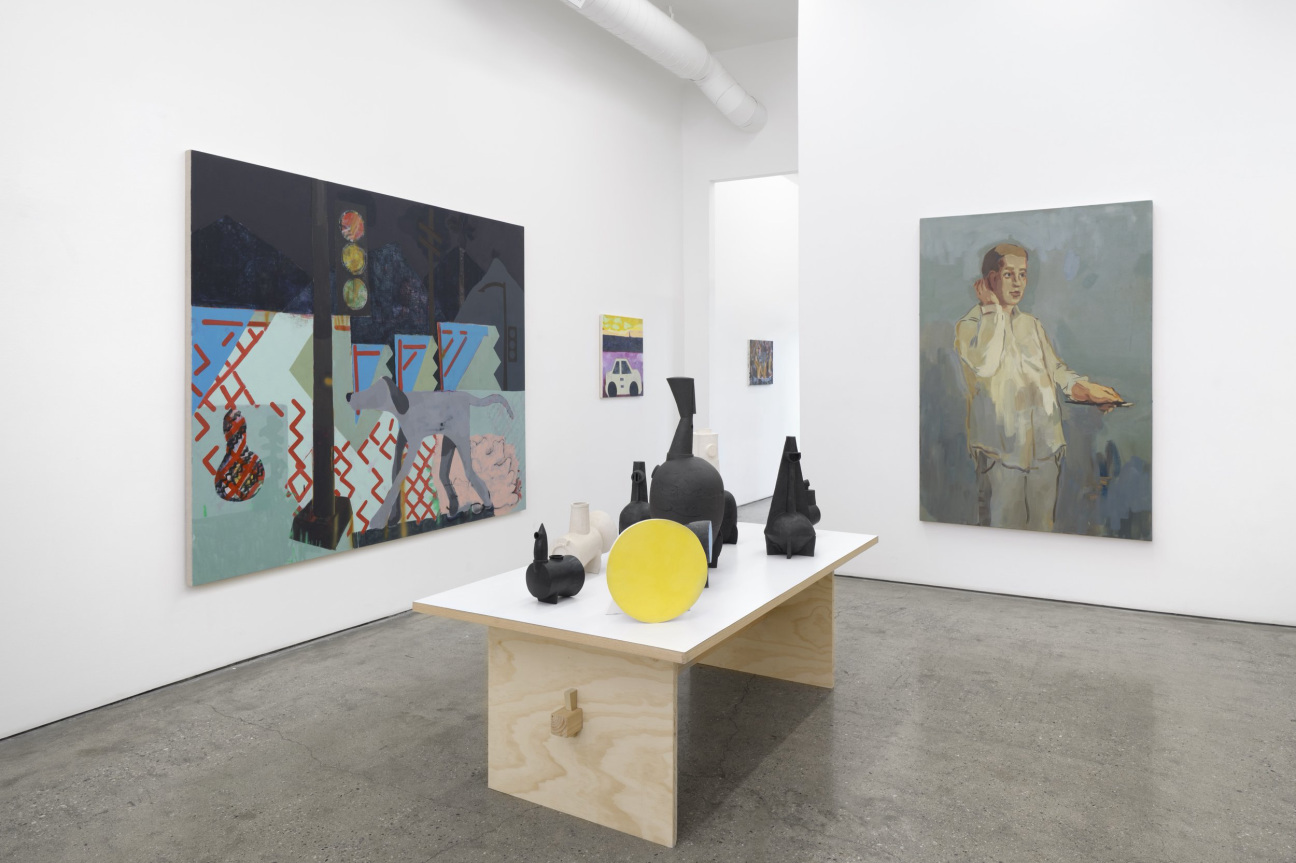
When Esther Kim Varet opened her gallery Various Small Fires in 2012, LA’s gallery ecosystem was “very small and very local,” she says. Initially operating out of the first floor of her townhome on Abbot Kinney Boulevard, Varet attributes her early success to her connections to New York’s art world. “A lot of my early shows were bringing New York artists to LA that were doing really well in New York but hadn't shown in LA yet, and the LA scene was very hungry to see these works and practices,” she says.
LA's gallery landscape has long wrestled with the burden and blessing of being seen as slightly removed from the big-money art scenes of New York and London. Yet it’s exactly this distance that enabled the development of a curious, diverse, and now mature market whose range—from the mega-gallery to the midsize dealer to the upstart experiment—mirrors the variety of Los Angeles’s neighborhoods.
The newly minted “Melrose Hill” area has become an oasis for fresh galleries in the city’s decidedly decentralized arts ecosystem, including Southern Guild, Sebastian Gladstone, and Fernberger. At the same time, a number of midsize LA galleries have closed their doors since 2023, including Vito Schnabel, Lorin Gallery, Nino Mier, Carlye Packer, Praz-Delavallade, Harper’s, and Gavlak, citing a slowing market post-pandemic buying craze and a smaller pool of local buyers.
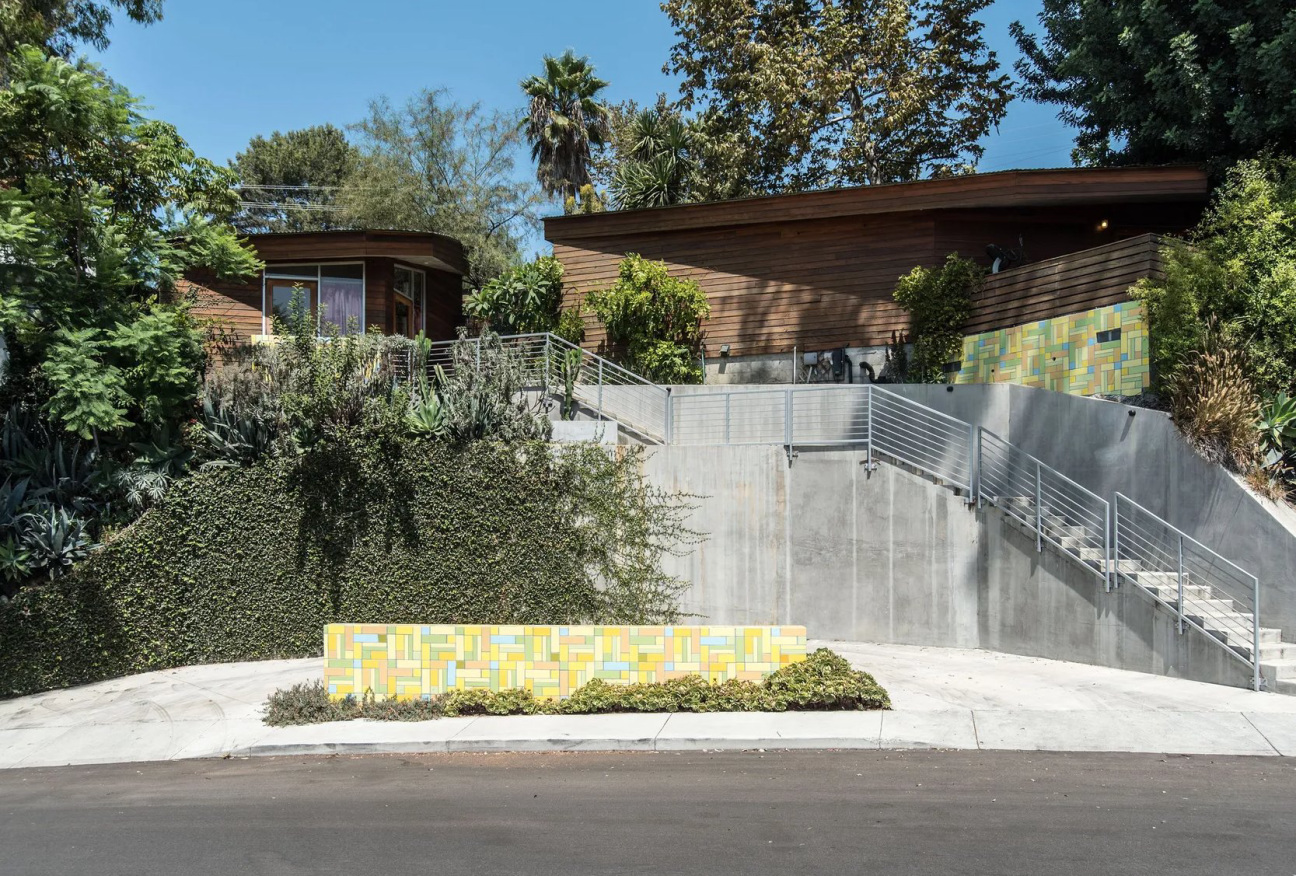
Against this shifting backdrop and unpredictable market, a wave of smaller, younger galleries have established themselves as cultural bellwethers and resilient businesses. While this generation is looking to dealers just a half generation ahead of them as examples of success, they are also confident enough to carve their own paths—and, in the process, channel a distinctly Angeleno penchant for innovation and imagination. Now, it’s the New York galleries that benefit from their proximity to and connections with LAs’s art world, rather than just the other way around.
Following January’s devastating Palisades and Eaton wildfires that claimed large swaths of Los Angeles County (to the tune of nearly 40,000 combined acres across Altadena and the Pacific Palisades), the LA art scene is poised to enter yet another new chapter. Some homeowners whose properties were claimed by the fires reported losing significant works of fine art; scores of artists lost everything. With Frieze LA opening on Feb. 20, the tight-knit local community has a chance to support its own—though it remains to be seen where art-buying lands on the spectrum of priorities for many in the city.
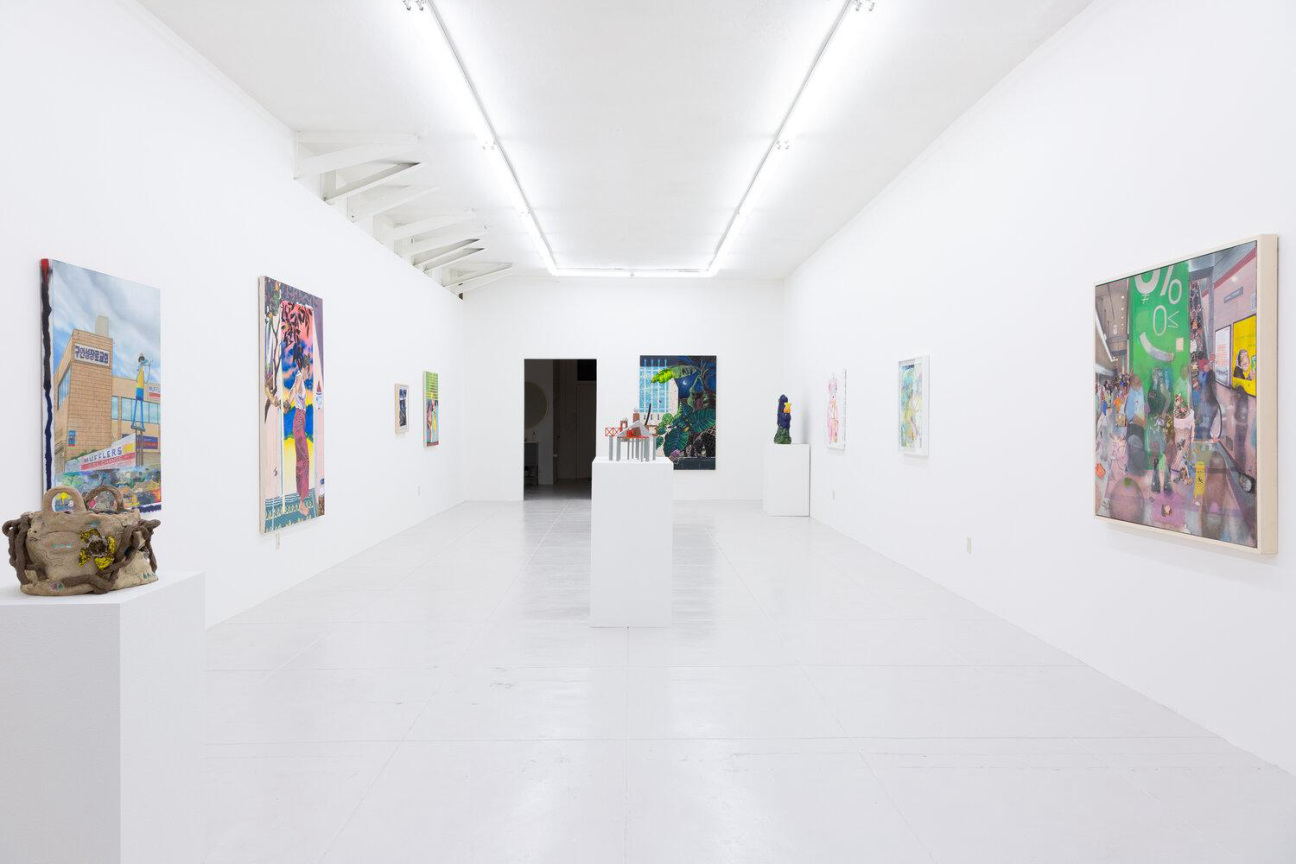
At this critical juncture, CULTURED spoke with five young, taste-making galleries, all founded within the past five years, who are showing promising maturity and confidence as they establish themselves in LA’s increasingly crowded gallery market. The diversity in their programmatic approaches, curatorial instincts, and artists represents the eclecticism, communal spirit, and interconnectedness that defines the LA scene in an often competitive, trend-led industry.
“It will always be seductive to replicate what others have done successfully, but I do think the best gallerists and dealers that are out there are willing and open to imagine what others have not done yet and how to make that successful,” Varet says. These five galleries are “making new [categories] of success” in their own unique ways: Sea View uses a residential space as a gallery to encourage visitors to see the relationship between art and the domestic sphere, Sebastian Gladstone is reanimating the city’s long history of craft-based practices, Sow & Tailor leans on an outsider perspective to engage diverse audiences, Megan Mulrooney celebrates the homegrown talent of Los Angeles’ creative class, and Fernberger collapses time with intergenerational exhibitions.
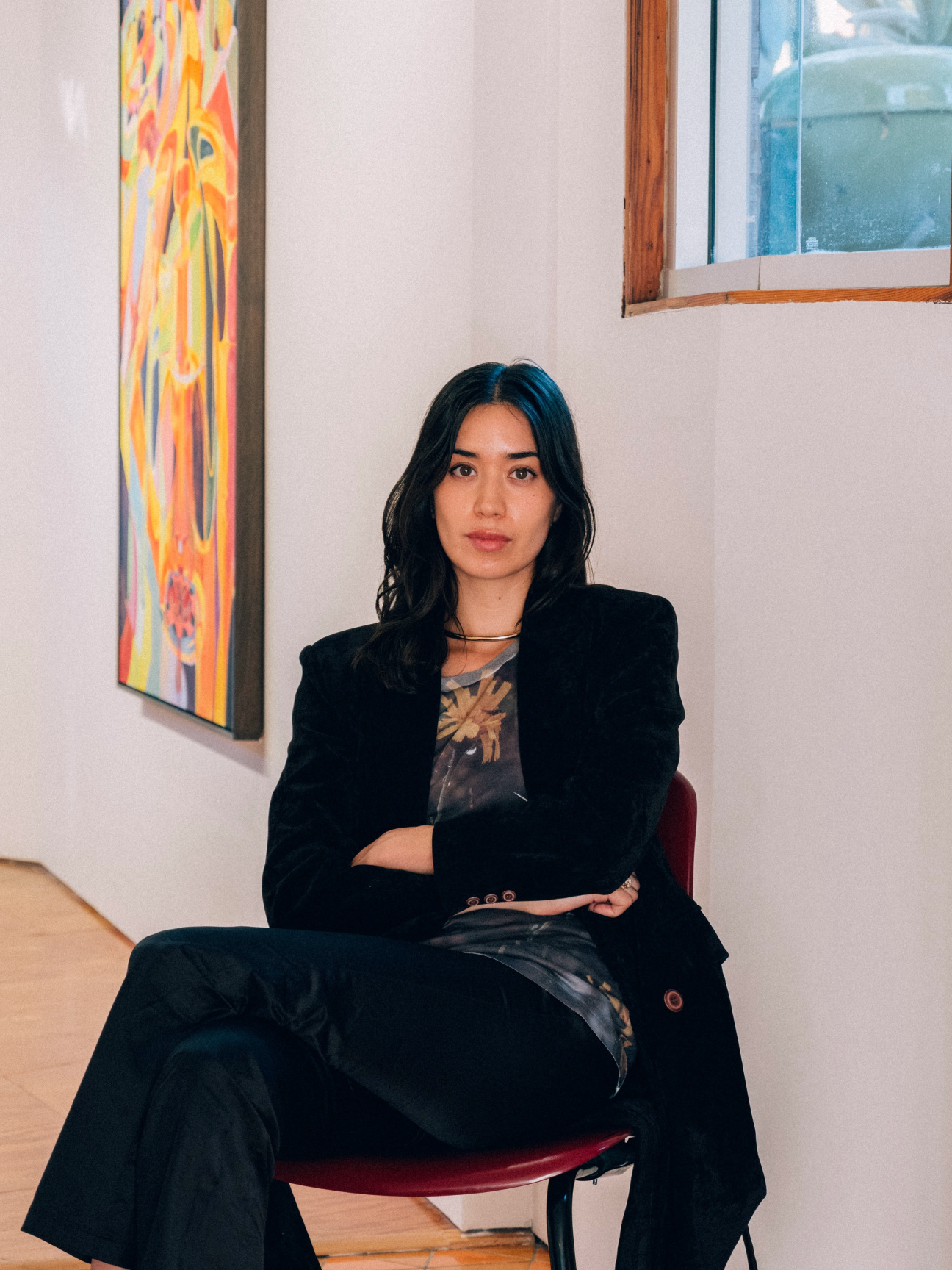
Sea View
Sara Lee Hantman, a former senior director at Various Small Fires, founded her own gallery, Sea View, in 2023. It sits at the top of the historic Mount Washington neighborhood in a “social sculpture” home studio—and former offsite MOCA exhibition space—built by Jorge Pardo.
Why did you choose a home studio space in the Mount Washington neighborhood for your gallery, and why was it important to break out of a traditional gallery mold for you?
I've worked for bigger galleries for over 10 years, and I feel like the primary concern with every gallerist was growing larger. I wanted to focus on the roles that architecture and intimacy play in the experience one has when walking into a gallery in places like Europe or Japan. I wanted to really focus on the programming and not exchange quality for scaling.
Is there something you remember being particularly difficult about starting out?
I think people not taking it seriously. When you're not in a traditional white cube, you're also fighting against traditional definitions of success. I created a setting for people that was seemingly non-transactional, but actually everything is for sale, from the lighting to the art on the walls. People immediately think of it as more experimental, rather than taking it seriously as this commercial space.
Was there anything you found surprisingly easy?
Seeing the work within a domestic environment was actually a very effective way to sell art and to create storytelling for people.
What distinguishes the art scene in LA for you from other markets?
LA has such a robust history of artists and collectors with these incredible homes and incredible amounts of space to show their work. And some of the best collections here are artists’ collections, in my opinion.
Is there a show that stands out as one that really inspired you, or that you wish you had curated yourself?
One of the exhibitions that has most influenced me was a group exhibition at Gallery Trax in 2017, a small but mighty gallery in Yamanashi Prefecture, Japan. The gallery is located inside an old traditional school building in the woods at the base of Yatsugatake, a volcanic mountain range. Rather than providing a price list for the exhibition, the owner, Etsuko Miyoshi, welcomed us with hot tea around a large handmade wooden table. The experience of viewing art was inextricably tied to the experiences of nature, interior, and communion. It showed me the importance of spirit and context when introducing an artist's work.
How will the wildfires impact LA’s gallery scene and the selling of art in a city post-disaster?
I’m going in and out of feeling completely heartbroken and hopeful. What a gift to be able to share our grief, to lean on friends, neighbors, colleagues, our work. I'm not saying it makes things easier, but if anything, it has helped make LA's creative scene grow closer and stronger. Maybe this is just a hopeful day, but I believe in our city and people.
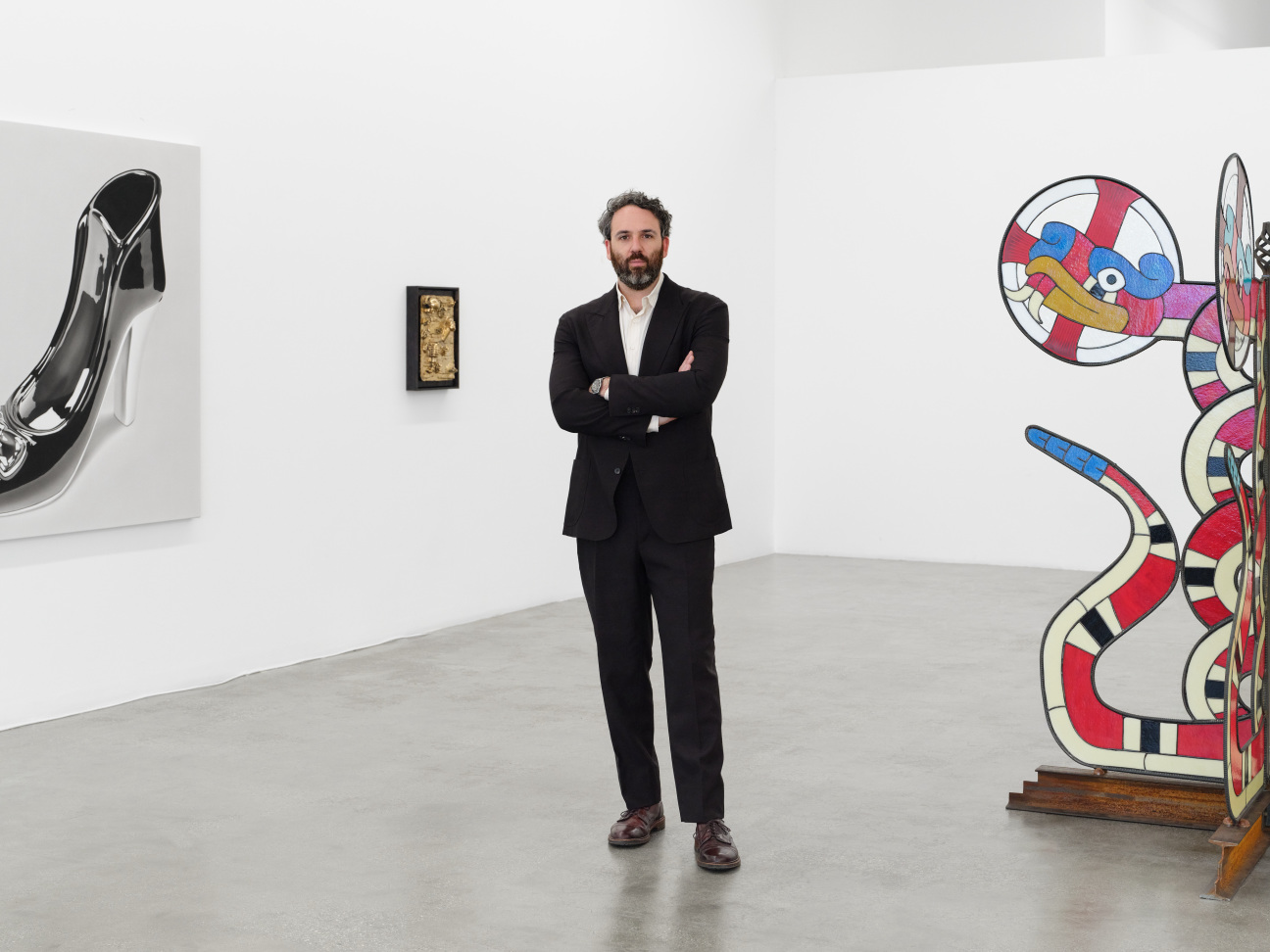
Sebastian Gladstone
Sebastian Gladstone is a gallery with a focus on sculpture and contemporary art, particularly from artists with craft-based practices. Gladstone—artist Jonas Wood’s onetime personal assistant, who has also worked at several galleries—founded the business in the historic craftsman home of ceramic artist Stanley Edmondson in Pasadena in 2020. He later moved to Hollywood and opened his first New York location in January.
What role do you see younger galleries playing in the larger gallery ecosystem, especially as older, more established ones close?
Smaller to mid-level galleries are very important for the art ecosystem because we are the galleries on the front lines fostering careers at the very beginning. I'm not trying to be a quote unquote, big gallery. I would like to have a gallery that's respected with a tight program that artists want to show with. And I think there's this race currently to be the biggest thing possible. We have been shown that that's not necessarily sustainable for most people in the art ecosystem.
What gaps did you notice in LA’s gallery scene when you decided to open?
A big throughline in my gallery program is this idea of crafted material. There are a lot of artists where manufacturing influences what they do, as well as the vernacular of the city itself. Having a gallery with a very Los Angeles identity, showing Los Angeles artists, was very important.
What has it been like weathering an unstable market as a smaller, younger gallery? Have you had any mentors in the LA gallery scene that helped you navigate it?
The gallery has scaled up significantly since we started, and running a business at a larger scale [means] there's a big learning curve. There's no playbook for how to run a gallery. I definitely have looked to other gallerists who have been in the game longer, like Marc Selwyn, who I see as someone who has shown me the ropes and been really generous with his time.
What’s the first piece of art you collected, or that really spoke to you?
The first piece of serious art I wanted to buy was a Magdalena Suarez Frimkess sculpture and at the time they were very cheap compared to what they are now. I just didn't have the money for that. The first thing I bought from another gallery was a Rigoberto Torres self-portrait from Charlie James. And then the first time I collected a very serious piece of art was a Peter Hujar photograph from Marc Selwyn.
How will the wildfires impact LA’s gallery scene and the selling of art in a city post-disaster?
As someone born and raised in Los Angeles, I have always had an awareness of our temporality and the delicate relationship with the natural world here. I have faith in our artists, collectors, and community at large to show up for the city, and work together to repair what has been destroyed. Los Angeles has always been a resilient city filled with resilient people and it will continue to exist in this way into the future.
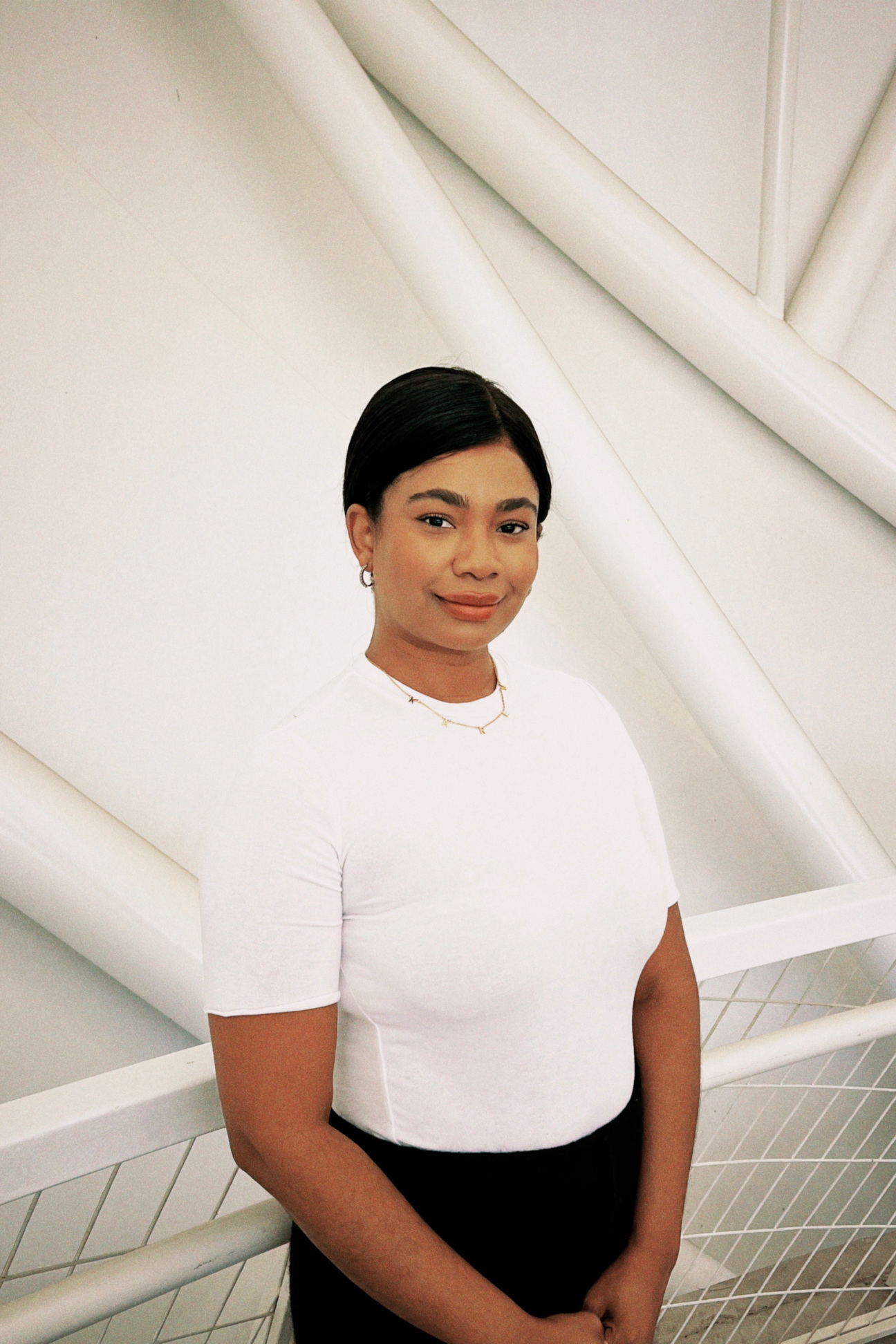
Sow & Tailor
Established in 2021 by Karen Galloway, Sow & Tailor is a Black-owned and family-operated contemporary art gallery that is dedicated to promoting diversity and intersectionality. Many of the curatorial projects are driven by collaboration with institutions and activate cultural centers and museums in the greater Los Angeles area.
How did you develop your curatorial taste, and what do you look for in artists and collaborators?
My background was not in art. I’d gone to plenty of art shows growing up and I also went to an art school for college, but I feel like I have a different eye for work because I initially wasn't looking at that much art. So one of the things we look for in an artist is a connection—can we work with them, do they have a good vibe and good energy. But talent speaks for itself. It’s evident in the work. You can see if an artist is there already.
What’s it been like weathering an unstable art market as a smaller, younger gallery?
When it comes down to it, in slow periods, that's when you need your supporters the most. To keep the lights on, it comes down to sales, so when things are slow it for sure gets difficult, but at the end of the day we try our best to keep the business going even though sometimes collectors are able to purchase things and help support the gallery and the artists, and other times they aren’t.
Are there any artists, movements, or themes you’re particularly excited about right now?
I’m showing more photography; at Frieze LA, I’m working with the artist Shaniqwa Jarvis. I think photography and mixed media work is going to be really strong coming up. There are so many interesting photographers out there—they're not just showing prints, they’re also maybe painting on them and adding things, making the work new and original.
How will the wildfires impact LA’s gallery scene and the selling of art in a city post-disaster?
I believe this moment will have a positive impact on LA's gallery scene, particularly in how the community has come together to support one another and the artists affected by the fires. I’m optimistic that sales will see a strong boost as people rally behind both the LA art scene and the individuals who have been impacted.
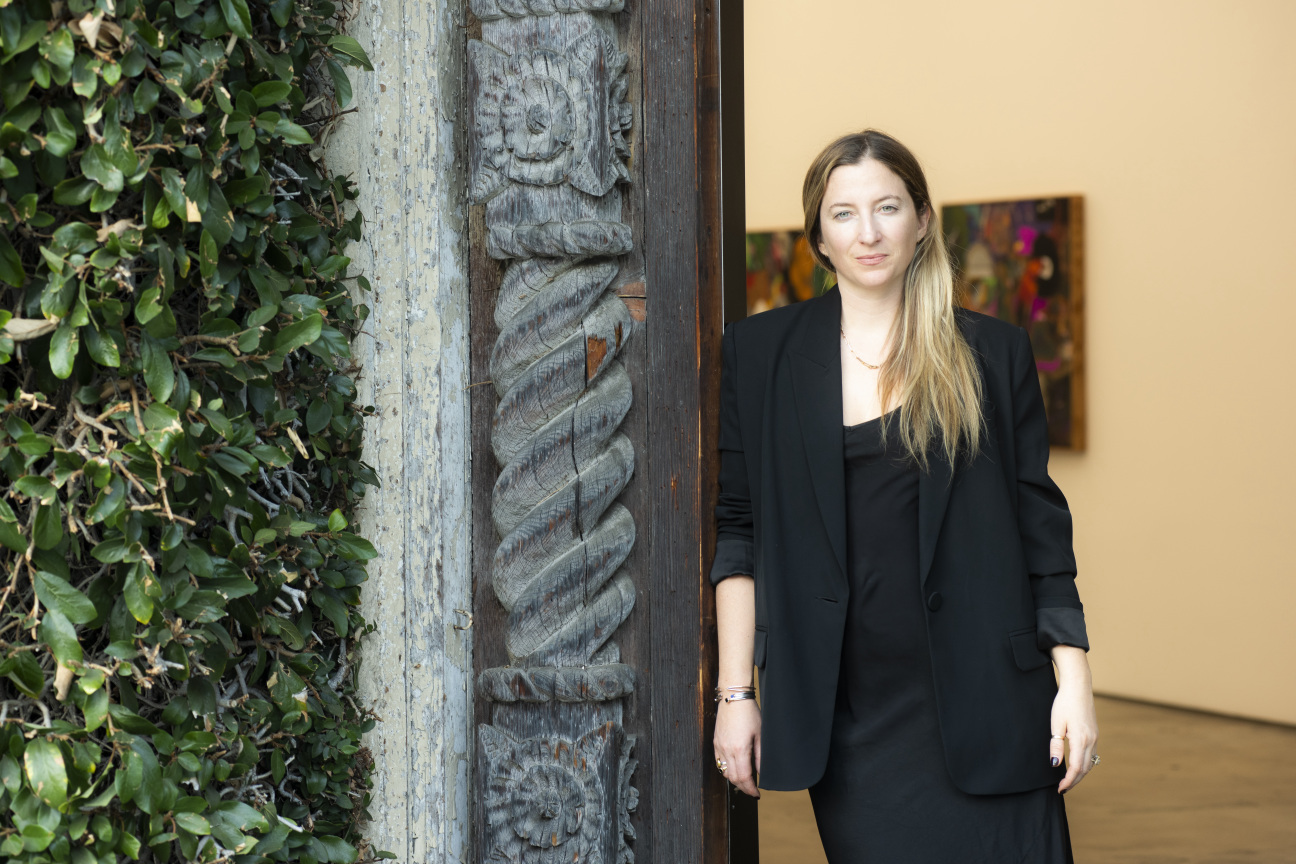
Megan Mulrooney Gallery
Megan Mulrooney’s West Hollywood outpost opened in 2024, and centers on amplifying emerging and mid-career artists in Los Angeles and around the globe. The eponymous founder was previously a director at Nino Mier.
What role do you see younger galleries playing in the larger gallery ecosystem, especially as older, more established ones close?
That speaks to a lot of the reasons why younger gallerists are starting their own galleries in the midst of larger galleries closing…you can be more transient. You can be more amiable to changing influences, because you don't have this program that's been developed for years that you have to stick to. So I think it's this understanding that a new generation of collectors is eager for fresh voices and fresh faces. Los Angeles does prioritize their own. So if it's something that is important to Angelenos, or if we have someone showing that's from Los Angeles, most people are going to show up.
Do you feel like that flexibility is useful when working in an unstable art market?
I do, especially in a market that is trying to find its feet and understand what’s next. This is the time when the older generation of collectors are phasing out, and now it's time for younger galleries to educate a younger public about how to collect and support artists. How do we create new collectors of this younger generation?
Is there a show that stands out as one that really inspired you, or that you wish you had curated yourself?
My favorite show is this show that I saw in Siena, Italy. It was called "Art, Genius, Madness." It brought together all these different artists—some practicing, working artists, some famous artists, and some who were self-taught, or who were just taking classes—but all of them had been in a mental institution like an asylum or a sanatorium. And it was amazing to view what society has rejected as art, or someone who is not the ideal of who is making art, and then have it on the walls in this kind of art, genius, madness moment where madness breeds genius. Playing with someone's suspicions or superstitions or preconceived notions of what art should be is always so exciting.
What’s the first piece of art you collected?
It was a pastiche of Francisco Goya’s Saturn Devouring His Son. I actually kept it in the glove compartment of my car and would [occasionally] take it out and look at it to remind me why I liked art.
How will the wildfires impact LA’s gallery scene and the selling of art in a city post-disaster?
Artists are visual historians who help society collectively process feelings toward traumatic events like the devastating Eaton and Palisades fires. While unfortunately the hardships faced by displaced community members will continue long after the fires have ended, it has been heartwarming and uplifting to see how those in the arts have banded together to donate and fundraise for artists, galleries, and cultural workers who have suffered the loss of their home, studios, and belongings. The need for art, and the cultural institutions like museums and galleries that show it, has never been greater.
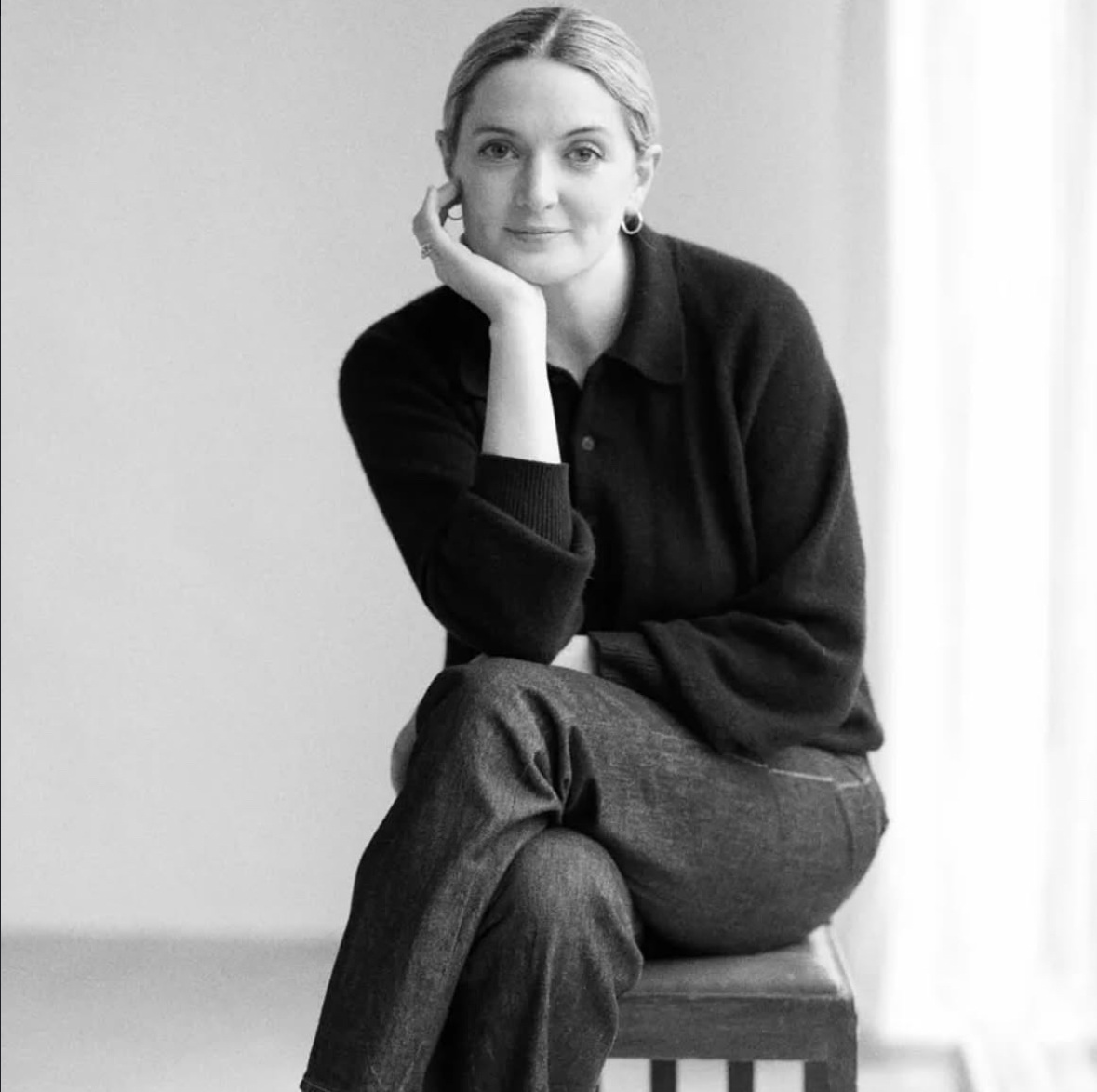
Fernberger
Emma Fernberger founded her namesake gallery in January 2024 in the Melrose Hill neighborhood with a focus on intergenerational artists, namely women-identifying, with a global perspective. She formerly worked at Hotel in London and Bortolami in New York.
What gaps did you notice in LA’s gallery scene when you decided to open your gallery?
LA has a ton of really fantastic emerging art galleries, and it has a bunch of really fantastic galleries that feature more established artists. What I saw as something I could add to that bigger picture was a gallery that featured an intergenerational mix of artists that were both from LA and not.
Was there anything that was surprisingly easy about building your gallery and developing a reputation in LA?
The best galleries, to me, are ones that are guided by the taste of the person at the helm, and not just a response to market trends. You spend a lot of time worrying, “What is the vision of the gallery? What is the point of doing all this?” And I think it's something that kind of just reveals itself over time as you pursue your own interests. I think of my role as being a professional enthusiast. Your guiding principle has to be your own taste and excitement.
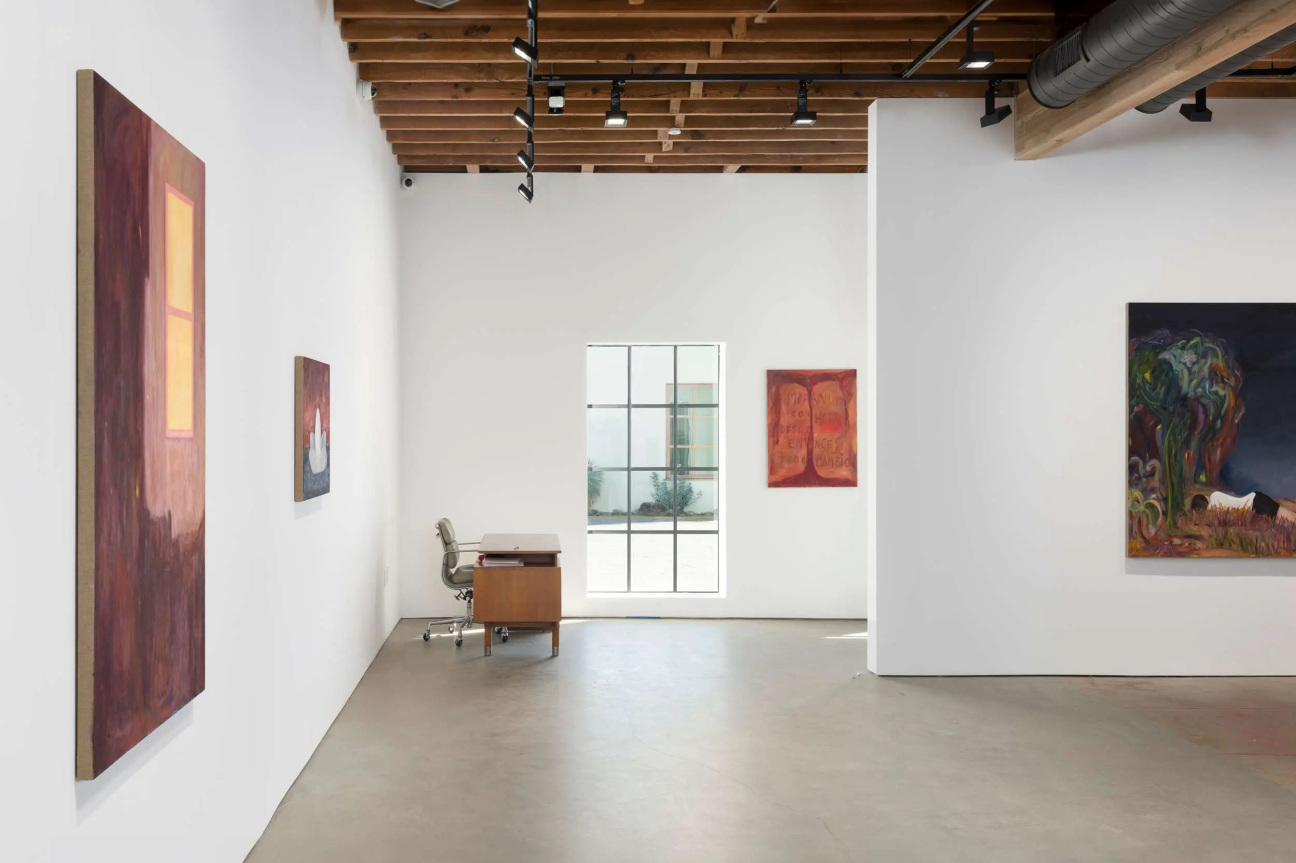
How did you develop your taste, and what do you look for in an artist or collaborator?
I think the greatest relationship that a gallerist can have with an artist they work with is that of a co-conspirator. That's something José Freire, who I used to work for, would say. In terms of art, I look for things that stop me in my tracks and make me slow down. I tend to want to be in the presence of works that have a sort of phenomenological quality. That can take any form: conceptual, painting, sculpture, film.
Do you have any predictions about artists, movements, or themes that will be popular in 2025?
I think there's going to be a pendulum swing away from speculative, flash-in-the-pan art. A lot of people got really excited during the pandemic and made decisions that were based on financial gain, and now a lot of that [art] is essentially worthless. That's brought a healthy skepticism back. I'm hopeful that people are going to start looking with their eyes a bit more than their ears.
How will the wildfires impact LA’s gallery scene and the selling of art in a city post-disaster?
Los Angeles, and Angelenos generally, strike me as being really resilient. This is a city full of optimistic visionaries who historically turned a desert into an oasis. It's not a surprise that we're victims of a climate disaster—the writing's been on the wall—but I think it's a population that is predisposed to bounce back. Everyone I know seems pretty eager to get back to work, so hopefully that's what will happen.
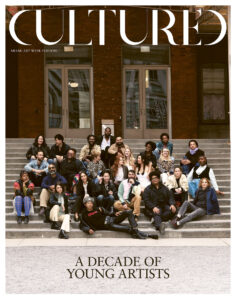
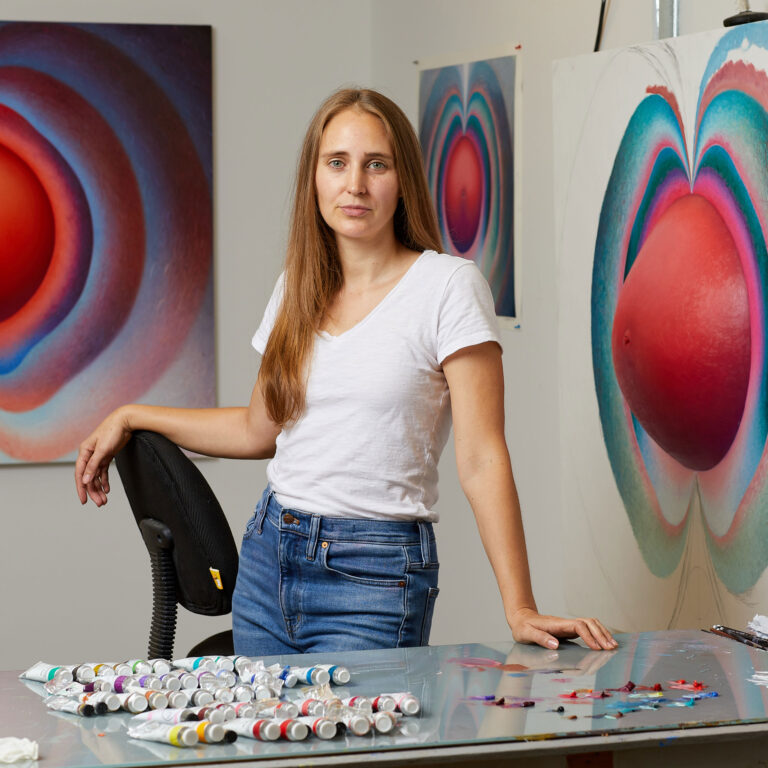
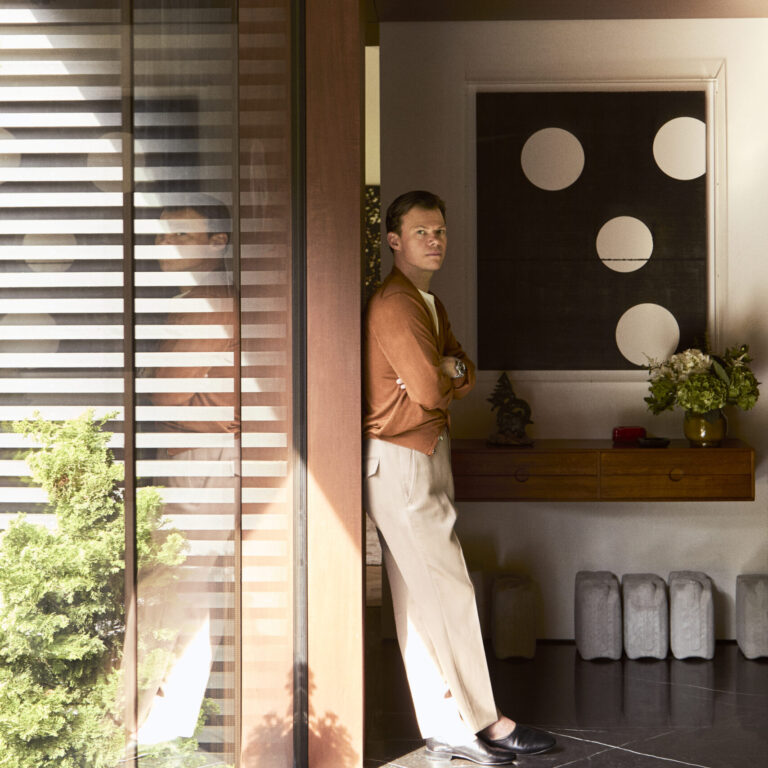

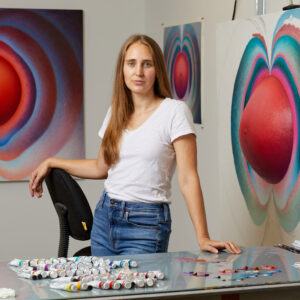
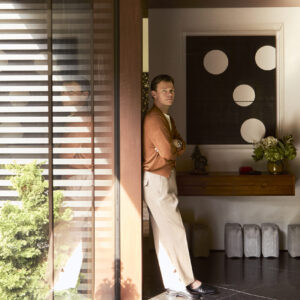
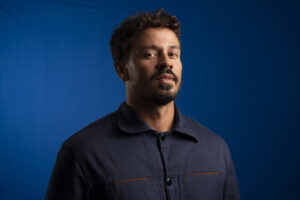

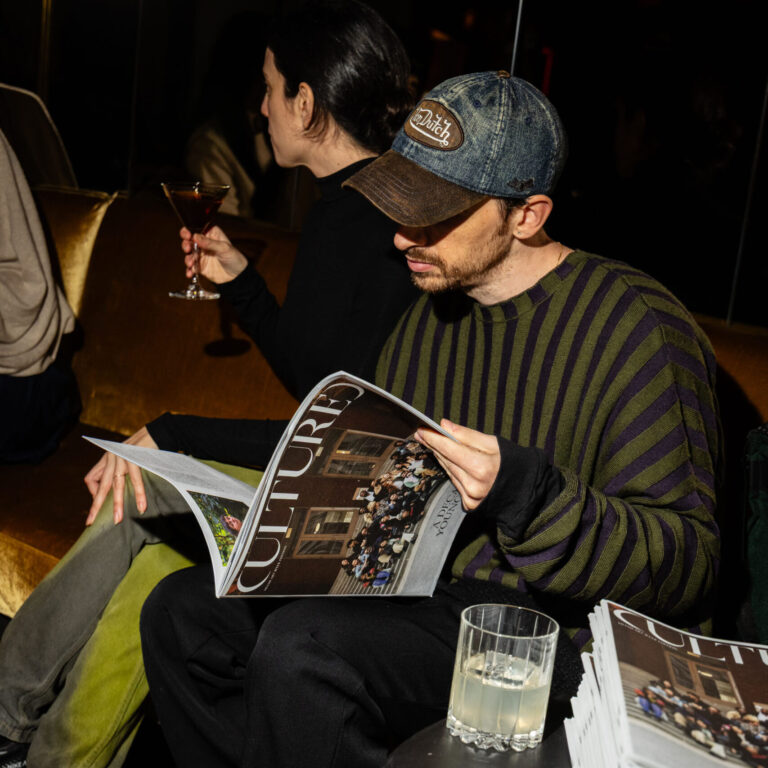

 in your life?
in your life?

